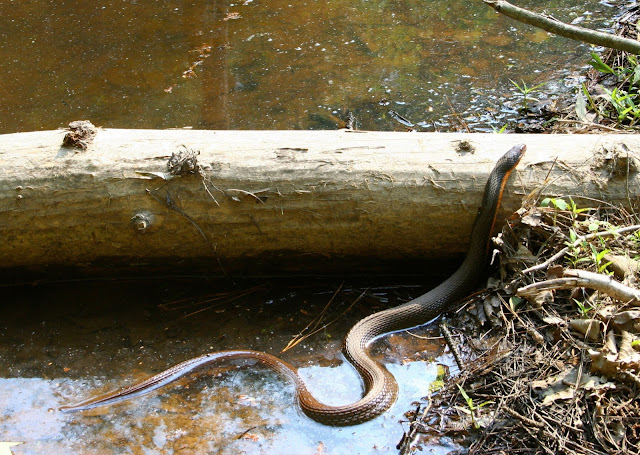Although Brood II will emerge a little to our north and west in North Carolina, Hoot Owl Karma encountered a few hundred thousand or so members of Brood XIX, one of the three remaining broods of 13 year cicadas, back in May of 2011. For those of you who missed out, here's a brief look back...
After 13 years below ground, tapping tree roots for nourishment, the nymphs emerge by the billions and head for the treetops to molt.
Four exoskeletons on a single leaf may seem a bit much, but the emergence at this site wasn't nearly as dense as in other places. Scientists estimate as many as 1.5 million cicadas per acre in some areas.
While the red eyes lend these bugs a rather fearsome facade, they possess no stingers or teeth or other defensive apparatus, relying instead on sheer numbers to overwhelm potential predators, so that any given individual has a relatively good chance of surviving to reproduce.
There were four different species of the genus Magicicada in Brood XIX, and Brood II will consist of three different species. We're still learning to distinguish them, but hopefully these pictures have given you idea of what to watch for if you're in the range of this year's emergence.
If not, no worries. Just close your eyes and listen for the sound of a million or so males vibrating their tymbals simultaneously in hopes of attracting a mate from amongst the millions of silent females in the teeming treetops. Cicada magic, that's amore!






















































